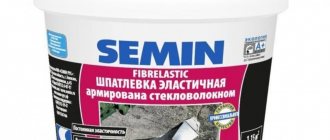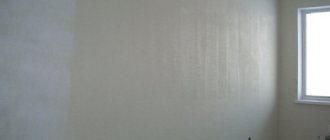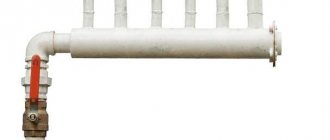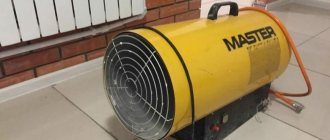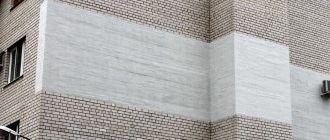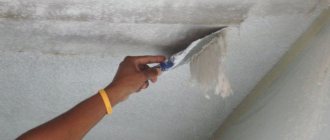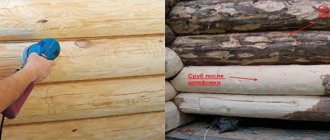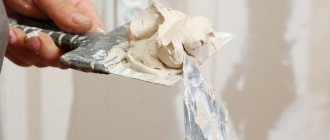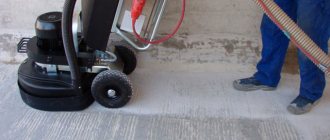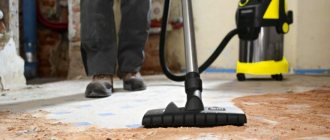Principle of operation
The design of the putty grinder consists of a horizontal plane with abrasive paper attached. The basis of the working element is fixed in several ways, which are reflected in the principles of operation of the equipment.
Fixation with a clamp is a popular and easy-to-use method for household sanders. The shape of the clamp is similar to a latch on a spring. For these models of units, the sanding sheet is prepared independently from sandpaper. This will reduce the cost of replacing abrasives.
In addition, this element can be fixed with Velcro. Such equipment is expensive and does not require independent preparation of grout paper. The tools provide for the removal of dust produced during the grinding process using a vacuum cleaner or dust collector. The presence of the former in the machine allows you to perform work more quickly without interruptions to clean the tank.
What else will you need?
Apparatuses for grinding surfaces are designed with dust collectors for finely dispersed putty dust.
But know that such a part works if there are special holes on the abrasive to suck in dust particles.
Pay attention to the filter material (paper is disposable and needs to be changed).
But with a plastic filter, you won’t have any problems - it’s simply washed and fixed in its usual place.
Kinds
The machine for grinding walls and ceilings after puttying according to the method of surface treatment is divided into the following types:
- tape;
- eccentric;
- vibrating flat.
The classification of grinders for leveling hardened plaster mixture on walls, ceilings, and niches involves division into the following subtypes:
- pneumatic;
- electric.
Tape
This type of grinding machine is used to prepare the base for applying decorative plaster or other types of finishing. Belt units are used to remove old paints and are not suitable for grouting putty or plastered surfaces.
Models for domestic use are inexpensive, but are designed for a small number of applications. Professional belt equipment can be used for different conditions, including heavy workload. The machines are equipped with an abrasive belt, which is placed on rollers.
The equipment is used to process large spaces. However, due to their high power, belt equipment is not recommended for finishing sanding.
Eccentric orbital
Orbital eccentric sanders are used for fine processing of substrates. The abrasive part of the tool moves along a complicated trajectory, ensuring thorough grinding of surfaces. The sandpaper in this unit is secured with Velcro. The main purpose of eccentric machines is to finish walls after puttying and polishing.
Special eccentric machines for processing large spaces are also produced. The models have an ergonomic telescopic handle and are equipped with a gearbox. These machines can be equipped with large grinding wheels with a diameter of 215-225 mm. An additional option for the units is the removal of old paint layers from surfaces, grinding stone and concrete bases.
The use of units reduces labor costs and operating time. The models are very expensive and are recommended for purchase for regular use.
Vibrating flat
Equipped with a clamp for fixing sandpaper. In terms of the quality of work, the equipment is similar to eccentric ones, but the cost of the units is lower. The surface grinding equipment is equipped with a rectangular sole, on which sandpaper of the required grit level is fixed using clamps. Grain sizes are selected in accordance with the tasks being solved. For puttying on walls, sandpaper No. 100-120 is used, metal bases are sanded with machines No. 40-80. Wood processing is carried out using sandpaper No. 180-240.
A subtype of vibrating products are delta grinding units. The sole of the equipment is made in the form of a triangle. The equipment is suitable for grinding hard-to-reach spaces (corners, joints, arches, openings). This type of machine is optimal for sanding flat surfaces (walls, ceilings, wood products).
When purchasing vibration models, the sandpaper fixation technique is selected.
It is recommended to purchase high-quality models in which the sandpaper is securely fastened. The products are suitable for finishing sanding on flat surfaces, but are not effective on uneven curved substrates.
Description of the Makita BO3711 grinder
This device is designed for finishing wood sanding. The Makita BO3711 grinder is a high-performance equipment for industrial use. However, this equipment can be used in a small room.
The dimensions of the abrasive paper for the device are 228x93 millimeters. The paper is secured in special clamps. The regularity of oscillations is from 8 to 22 thousand per minute. Moreover, in idle mode the number of oscillations is between 4 and 11 thousand per minute. The platform travel is 2 millimeters. To operate the Makita BO3711, an electrical network of 190 W is required.
The grinder is equipped with a powerful dust removal system. Dust is removed using a sanding plate. If you have a large area to sand, you can install a special dust bag.
The weight of the equipment is 1.6 kilograms. The design is distinguished by an ergonomic design, the presence of a soft handle framed by rubber.
It is recommended that the type of grinding device and specific model be selected taking into account the nature and scope of the work to be done. You should also take into account the type of surface being treated, and possibly your own individual preferences.
Comparison results of sanders for walls and ceilings - which one is better to choose?
The Festool Planex sander, which has a round attachment, is distinguished by its productivity of removing plaster and putty from walls and ceilings per hour up to 18 kg. For the eccentric model MIRKA DEROS, the material removal capacity per hour is 7 kg. However, when purchasing a model, you can take into account the weight of the sander. Models of the MIRKA DEROS brand are lighter - up to 1-2 kg.
Festool Planex grinding units are considered massive and designed for a large volume of work, the weight of which, depending on productivity, is 3.8-5.4 kg. Oversized devices are difficult for some craftsmen to work with.
Eccentric models
Eccentric or orbital sanders have a rounded working sole, which moves synchronously around its axis, rotating with a small radius. This feature of the sandpaper contributes to high-quality surface processing. The felt-based abrasive is attached using Velcro.
Photo: eccentric sanders
Unit weight – 1-3 kg. Has soles in two sizes:
- 125 mm – for small areas, delicate grinding;
- 150 mm – for large spaces, rougher processing.
Electric motor power – 200-900 W. The speed of translational movements is 4000-14000 revolutions/minute for models with adjustment, without a speed regulator – 12000 rotations.
This type of tool is the most effective and is considered universal because it can be used for grinding and polishing.
The vibration amplitude of an ESM is 2-7 mm; the lower it is, the weaker the device vibrates, the softer the abrasive works, ensuring clean grinding. Orbital vehicles have the lowest noise and vibration levels.
Application
Due to their versatility, ESMs are used for a variety of jobs, including carpentry and automotive:
- rough and soft grinding of large surfaces;
- processing of interlayer areas of coatings and materials;
- polishing and grinding planes along and across the grain;
- finishing of profile, volumetric and curved surfaces.
Grinding Features
Sanding is performed after the layer of putty or plaster has dried. It is optimal to wait at least 24 hours to obtain a reliable, durable decorative layer. It is recommended to inspect defects on the foundations (walls, ceiling). A flashlight is turned on to highlight defects on surfaces. Irregularities are marked with a pencil.
Then an abrasive mesh with the required grit level is attached to the grinding machine:
- No. 60-80 - used for rough cleaning of panels before gluing wallpaper;
- No. 100 - suitable for finishing sanding of ceilings.
Sanding is performed with rotational movements until a smooth base is formed. The top coat of putty is usually gentle, so no strong pressure on the tool is required; it is optimal to move the nozzle along the base without pressure.
The base of the machine should fit tightly to the surface of the wall or ceiling. The sandpaper is positioned parallel to the base being sanded; the movements must be uniform to prevent the formation of distortions on the working surface. The thoroughness of the work is assessed when the flashlight is turned on.
How to grind (sand) a surface
The tool has been selected, the necessary measures have been taken, and now you can sand the walls after puttying. It is important that there is good lighting, then all the irregularities will be visible. It is better the flaws immediately. A simple pencil is suitable for this. Sanding starts from the top corner and then goes down. In this case, an area of up to one meter is captured. The movements should be spiral-shaped, with slight pressure. The same applies when working with the ceiling.
When sanding putty, avoid applying strong pressure to the surface.
Excessive effort should be avoided. By pressing hard, you can create dents that can only be removed with new putty. The main thing is that in order to get a flat (smooth) surface, you cannot change the abrasive material. The more appropriate the work is to finish, the better it is to start. When sanding a ceiling, it is very important to maintain uniformity of effort.
READ Installing a chimney through a wall in a brick house
Safety precautions
When carrying out the procedure, it is important to consider the following safety requirements:
- Sanding walls treated with putty is a dusty finishing operation, so the work is carried out in a respirator and safety glasses. Furniture is removed from the room in advance, the floor is covered with plastic film to prevent dust in the space.
- The room is cleared of unnecessary objects that impede safe movement around the space with the instrument.
- The lighting in the room must be of high quality for grinding with a machine in a safe mode.
- The work is carried out using ladders or special stepladders.
- The safest machines are those equipped with a long handle to reduce the risk of falling from the stairs when finishing.
- Construction sanders are electric and can therefore generate sparks. Work is not carried out near flammable liquids or objects.
- Grinding with the machine is not interrupted, so the room is cleared of children and animals for safe work.
- If a strong smell or loud sounds appear from the machine, the equipment is turned off and sent to the service center specialists for inspection.
- Safe operation is ensured for electrical appliances. The plug from the machine must go into the outlet. It is not recommended to replace machine plugs to prevent fire. Only original elements ensure safe work. If the machine has a ground connection, the use of adapters is not allowed.
Experts recommend using equipment from trusted manufacturers. The list of rated and reliable in operation includes grinding machines of the brands Interskol, Makita, Sturm.
Dust protection
Sanding walls after puttying involves the presence of a large amount of dust. If you work with a grinder in a closed room, it will soon be filled with lime, and it will be completely impossible to stay in it. Also, dust will penetrate everywhere and it will be very difficult to get rid of it. Therefore, it is advisable to prepare in advance for dust removal. Of course, small works can be carried out without this.
It would be a good idea to cover all pieces of furniture, windows and more. If the work is carried out with machines, then they have a special connector for connecting a vacuum cleaner. It will suck out dust while sanding. This will also be useful for manual work. Such activities are carried out exclusively in a respirator and special clothing.
Let's prepare the tools
Before you start work, you need to prepare all the necessary material and equipment. So, we need the following tool for sanding the walls after puttying:
- sandpaper of different grain sizes;
- sanding mesh;
- sanding block;
- specially shaped sponge for working in corners;
- small spatula;
- portable lamp;
- stepladder or table;
- dust protection: respirator, goggles and hat.
Types of grinders
Based on the principle of operation, such devices can be divided into two main types: pneumatic and electric.
The main advantage of pneumatic models is their light weight and relatively low cost. Such devices are very often used as a professional tool, since even with prolonged use, hands do not get tired and labor productivity does not decrease. These positive qualities can be explained very simply - pneumatic devices do not have motors. Their working mechanism is driven by the pressure of compressed air supplied through a hose from a special compressor.
The main disadvantage of pneumatic sanders is the presence of a bulky compressor. In other words, such a tool can only work in a workshop where there is a possibility of supplying compressed air. That is why devices of this type are mainly used in car services and are rarely used for repair work. If such equipment is used to carry out repairs in your own apartment, you will have to additionally purchase an expensive compressor.
As for electric models, their main advantage is high mobility. It is almost always possible to connect to the mains, and using an extension cord is absolutely no problem. The disadvantages of power tools include their relatively large weight and overall dimensions, as well as their high cost.
If a grinding machine is chosen for renovation work in a house or apartment and will not be used in the future on large construction projects, then the obvious choice is in favor of electric models.
READ Network Screwdriver Which is the Best Cheapest Rating
According to the method of influencing the surface being processed, grinders can be divided into the following groups:
Let's take a closer look at each of these types of grinding machines.

